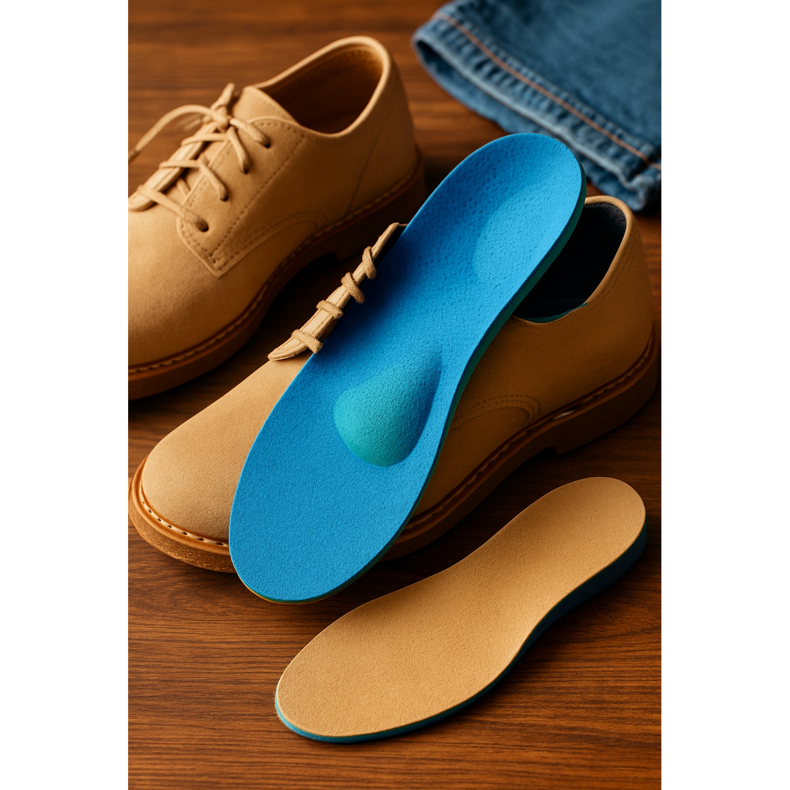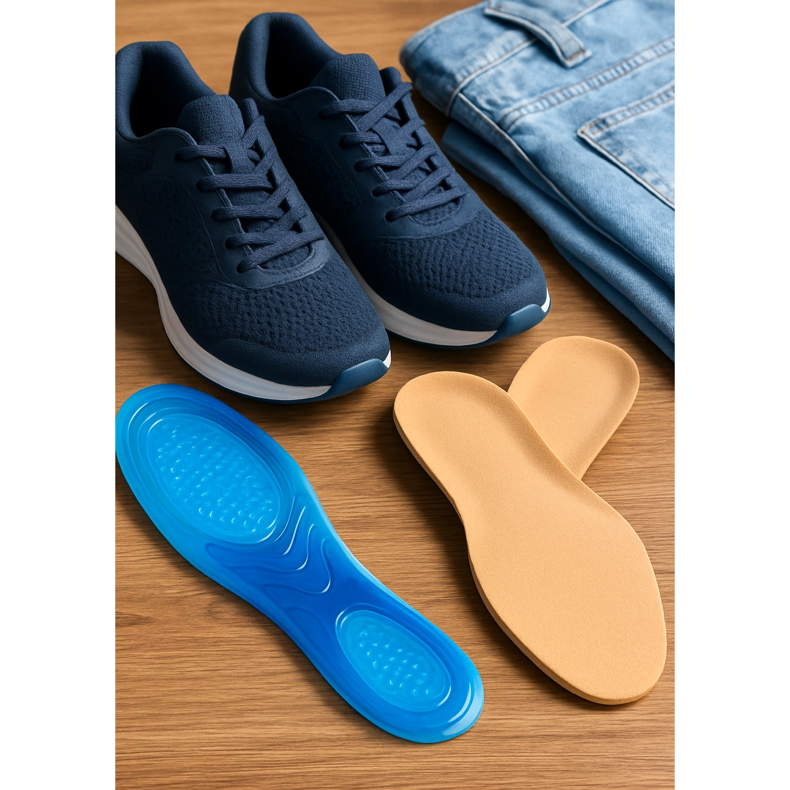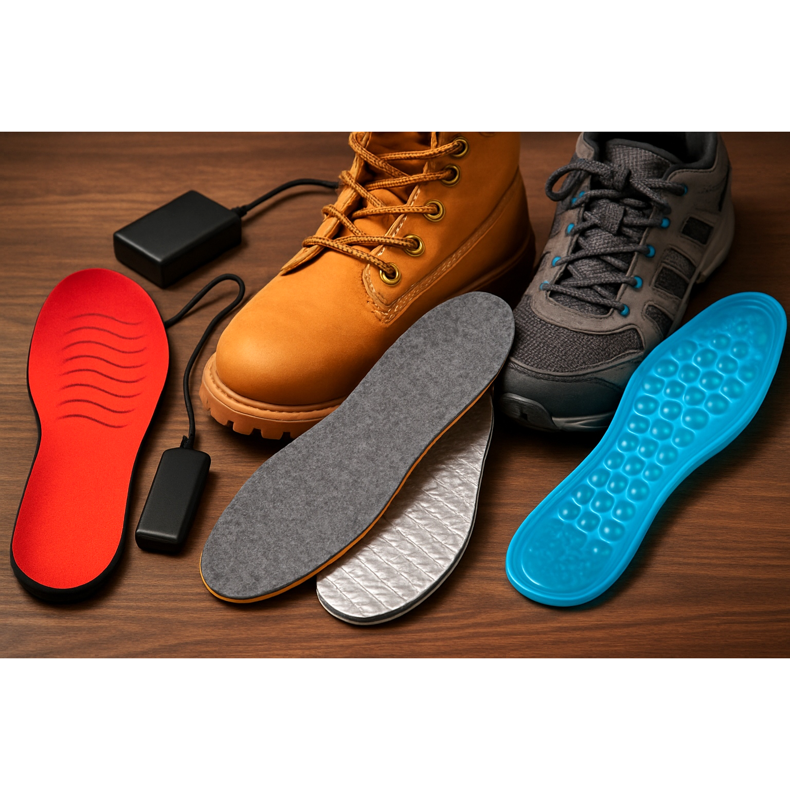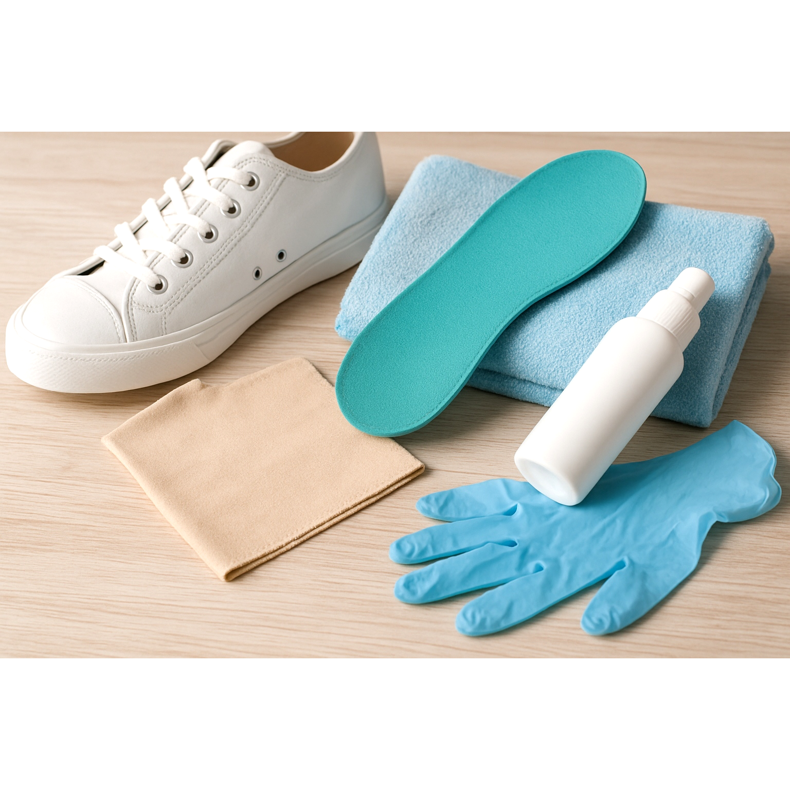
Shoe insoles – orthopedic, scented and for various needs
The complete guide to shoe inserts. Orthopedic, scented, heating and comfortable - get to know the types and learn to choose the right ones.

Orthopedic insoles – support for foot health
Orthopedic insoles are specialized inserts that support the correct positioning of the foot, correct biomechanical defects and alleviate pain. They are divided into ready-made (available in pharmacies and orthopedic stores) and individual (made to order after consultation with an orthopedist or podiatrist). Orthopedic insoles help with flat feet, longitudinal and transverse arches, excessive pronation or supination, painful heel syndrome, heel spurs, knee and hip pain resulting from incorrect foot positioning. Made of materials such as EVA, polyurethane, gel, latex, carbon. They require appropriate selection for the type of footwear and intensity of use.
Comfort insoles – gel and foam
Gel inserts provide maximum cushioning and comfort when standing or walking for long periods of time. Made of silicone or polyurethane gel, they perfectly absorb shocks and reduce pressure on heels, joints and spine. Perfect for people working in a standing position (salespeople, chefs, hairdressers), athletes, overweight people and during long walks or sightseeing. Available in full version or as gel heel pads. Memory foam insoles adapt to the individual anatomy of the foot, providing personalized comfort. They combine softness with good support. Great for casual sports footwear and everyday use.
Antibacterial and scented inserts
Antibacterial and antifungal inserts contain silver ions, activated carbon or other antimicrobial substances that prevent the growth of bacteria and fungi responsible for unpleasant odor and skin infections. Perfect for people with excessive foot sweating, athletes who train intensively, users of work footwear and during the summer season. Scented inserts with activated carbon effectively neutralize odors by absorbing odorous molecules. Insoles with a cedar wood or bamboo layer naturally deodorize and absorb moisture. They should be replaced regularly (every 2-6 months depending on the intensity of use) to maintain effectiveness.
Thermal inserts – heating and cooling
Heated insoles, powered by a battery or charged via USB, keep your feet warm during frosts. They offer different heating levels (usually 3-5 levels), operating time from 4 to 10 hours. Perfect for outdoor activities, cold work and winter sports. Thermal insulating inserts made of materials such as wool, Thinsulate, aluminum reflect body heat and passively retain heat. Lighter, cheaper, does not require charging. Great for winter trekking shoes and workboots. Cooling insoles with cooling gel provide relief on hot days, reduce sweating and prevent feet from overheating. Reactivated in the refrigerator. Perfect for couriers and construction workers in summer.
Specialized inserts - magnifying and corrective
Elevator insoles add 2 to 7 cm of height discreetly, hidden inside the shoe. Made of light multi-layer foam or silicone. Particularly popular in Asia, increasingly accepted in Europe. It is important to choose ergonomic models with adequate arch support to avoid discomfort. Corrective heel inserts that correct leg length discrepancy, available in various heights (from 3 mm to several cm). They help align the hips and reduce back pain. They should be selected by an orthopedist or physiotherapist, especially in the case of larger length differences.
How to choose the right insoles?
Measure the length and width of your foot carefully to select the appropriate insole size. Determine your foot type: flat, neutral, high arch - this is key to choosing the right support. Decide what type of footwear you will use the insoles for: sports, casual, elegant, work - different models are designed for different types of shoes. Consider your needs: pain, comfort, sports, work, disability - this will determine the type of insole. Check the thickness of the insole and make sure it will fit in the shoe without excessive pressure. In case of health problems (chronic pain, deformities), consult an orthopedist or podiatrist before purchasing.